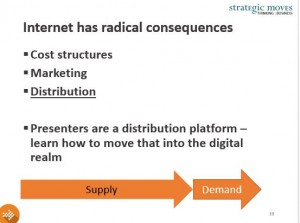COVID-19 Government Aid
Canadian governments at all levels responded to COVID-19 by telling people to stay home and shuttering large parts of the economy resulting in massive job losses along with creating massive liabilities for business owners and threatening the survival of businesses ranging from theatres, to restaurants and airlines.
Federal COVID-19 relief as of April 24, 2020 was $145.6 billion according to news media. In the first month COVID-19 emergency funding was already 3.5 times of Canadians’ old tax debt and it has continued to rise rapidly. As of May 26, 2020 news media reported that the $2,000 Canada Emergency Response Benefit had paid $40 billion dollars to 8 million Canadians. 8 million people represents a staggering 42% of Canada’s workforce, including sole proprietors, and self-employed Canadians.
The Government of Canada also immediately extended tax filing and payment deadlines from April 30 to September 1, 2020, ostensibly to reduce Canadians’ stress and anxiety of being unable to pay their outstanding 2019 taxes due to COVID-19 decimating their financial capacity to pay their regular bills for shelter, food and communications, let alone any outstanding taxes.
Canadians’ Tax Debts
In 2018, Canada Revenue Agency (CRA) reported that uncollected taxes had risen to $44 billion and “…unpaid tax owed is set to hit more than $47 billion by 2020. The steady increase in the tax debt — up by about $2 billion annually [since 2015] — comes despite a major investment in the 2016 federal budget to wrestle down fast-rising levels of uncollected tax debt.”
Importantly, “close to half of the unpaid tax debt is owed by individual Canadians. Corporations and businesses account for the remainder, which includes unpaid GST and payroll deductions not turned over to Ottawa.”
Source: https://www.cbc.ca/news/politics/tax-debt-liberal-budget-collections-1.4715967
To be clear, tax debt includes neither tax revenue lost to the underground economy (the black market) nor tax evasion, for instance through offshore tax havens. Tax debt means tax owed by Canadians who actually have filed their individual and business tax returns, i.e. people who rather than cheating are dealing with capacity to pay issues.
Universal Tax Debt Relief
Universal Tax Debt Relief is an efficient way to give affected Canadians a chance at recovery and rebuilding their lives, or at least some peace-of-mind. Meaningful tax debt amnesty has to extend to 2019 and perhaps include COVID-19 Year 1, ie the current year.
It would give affected Canadians a chance to wind down their businesses responsibly, perhaps even avoid personal and business bankruptcies, and stop having the millstone of CRA debt around their necks, potentially until the end of their lives. An utterly hopeless situation.
Eliminating their CRA debt would give affected Canadians a chance to begin the long but hopeful process of rebuilding their lives, their credit and start with a fresh slate in terms of their relationship with CRA. They could work to avoid poverty becoming a burden to Canada’s social safety system.
Unprecendented? Not really.
CRA has not collected from tax evaders despite having access to the Panama Papers and the Paradise Papers, for instance.
CRA has hired more tax collectors since 2015 to deal with the tax debt backlog, and they have assigned a few staff to tax evasion as well. But CRA simply does not have sufficient enforcement capacity and uncollected tax debt keeps growing – and no one seems to track what the other group, tax evaders, are doing overseas to avoid or evade taxes in Canada..
In 2012, the federal government simply wiped out about 280,000 skilled immigrant applications because they were backlogged and doing so gave the government a clean slate rather than have a years-old millstone around its ability to act in the present time.
https://www.cbc.ca/news/politics/canada-s-skilled-immigrants-backlog-to-be-eliminated-soon-1.1290847
But what about fairness?
COVID-19 isn’t fair. Falling into debt because of following ones passion
isn’t fair. Missing a single tax payment and learning the hard way how big a stick the government carries isn’t fair. Life isn’t fair.
My proposals isn’t suggesting anyone should not be paying their taxes – I pay mine and I expect all tax payers to pay theirs. This is simply a
recognition that there are groups of people who have ended up in dire financial situations, while they have been building businesses, communities and making all manner of contributions. With COVID-19 all bets are off. The fall out will include business and individual failures. This is a chance to give back hope for a better day.
COVID-19 relief has been fast and effective at saving the lives of millions of Canadians. It is time to save the lives of those Canadians who have been living under the unyielding choke-hold of tax debt and CRA tax collections.
Some added notes
Tax Debt and CRA’s punitive penalty and compound interest regime
CRA uses a punitive daily compound interest regime coupled with severe penalties for late filing or not being able to pay all taxes by the due date. This is applied in the harshest ways related to payroll taxes. GST debt and income tax is treated with somewhat less punishment in comparison. The penalties and compound interest exceed the average profit margin of many businesses by a wide margin, making catching up exceedingly difficult, if not impossible.
“The penalty for late filing payroll remittances is:
- 3% if the amount is one to three days late
- 5% if it is four or five days late
- 7% if it is six or seven days late
- 10% if it is more than seven days late, or if no amount is remitted
- 20% if this is the second or subsequent time you are assessed this penalty in a calendar year, if the failures were made knowingly or under circumstances of gross negligence”
Amongst other penalties there is a “penalty for failure to file information returns over the Internet.” And for some tax remitting organizations, “payments made on the due date but not at a financial institution can be charged a penalty of 3% of the amount due.”
Importantly, any monies owned to CRA including penalties and interest CANNOT be used as a tax write off. Normally, interest on a loan is a tax write off, but interest on CRA debt has to be paid out of after-tax income, making paying old debts dauntingly difficult.
Getting a loan to pay off CRA debt?
Banks will not make loans to people carrying CRA debt. Loan sharks on the other hand charge more than 30% on loans they give – again, most businesses do not achieve such high profit margins. This spiral of despair is a set up for failure.
Does bankruptcy wipe out CRA debt?
Important to understand is that debt to CRA is unlike any other debt – even in bankruptcy CRA debt is not automatically wiped out and can persist to the end of a person’s life. In effect CRA can keep a bankrupt person from ever emerging from bankruptcy. CRA can and does claw back Canada Pension Plan payments, which average around $650 a month, leaving seniors with tax debt in a despairing situation.



